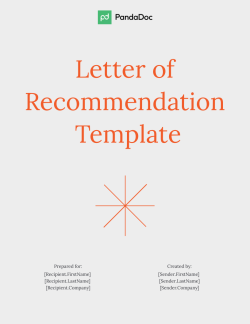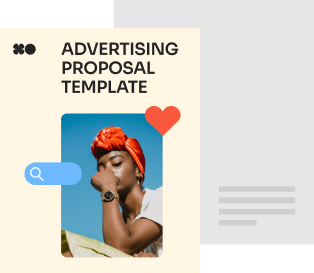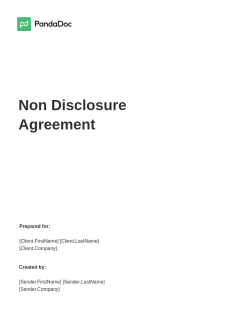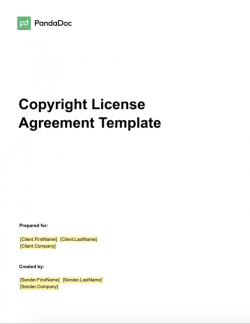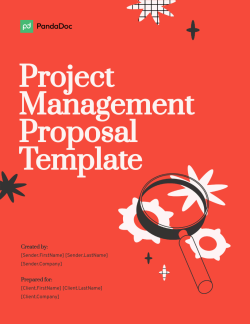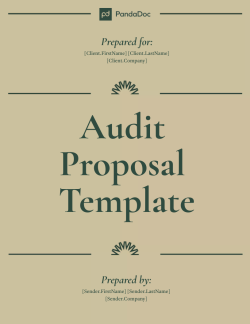Letter of Recommendation Template
Consulting proposal templates
Customize a consulting proposal template that allows you to show prospective clients the value you can offer their business. With PandaDoc, you can choose from a wide range of templates and create a personalized proposal in minutes.
Consulting Agreement Template
Freelancers and outsourcers of all kinds can take advantage of this legal, generic consulting agreement template. Customize this template to suit your industry and to highlight your experience.
Sales Commission Agreement Template
This sales commission agreement template can be used between a company and an employee or contractor to document acceptance of the company’s sales compensation policy.
IT Consulting Agreement Template
You need a detailed contract in place before beginning an IT consulting project. This IT consulting services contract can be customized, sent, and electronically signed in minutes!
NDA Template
This NDA Agreement Template can be used between a company and a vendor or subcontractor to establish confidentiality between the two parties.
Sublease Agreement Template
Looking to sublease your apartment or home? Try out this standard and free sublease agreement template to keep it above the board.
Finder’s Fee Agreement Template
You want to be paid your well-earned finder’s fee, and this free finder’s fee agreement template will help you get it done.
Copyright License Agreement Template
Use this Copyright License Agreement to authorize others to use your intellectual property.
Service-Level Agreement Template
Adapt this Service-Level Agreement Template as a way to define a service in an official capacity.
Technical Services Consulting Agreement Template
This consulting agreement template is designed to help technical services consultants establish business contracts with new clients. It includes pricing, legal terms, and electronic signature fields.
Financial Consulting Agreement Template
Due to the nature of financial consulting services, it’s important to have a detailed agreement in place between you and your clients. This financial consulting agreement template includes language specific to financial services, and works well for freelancers and financial consulting agencies.
What is a consulting proposal?
A consulting proposal is a document given to a prospective client detailing the scope of work that you (the consultant) or your consulting firm plan to perform over a set time frame.
While your proposal should emphasize the value of your consulting services, you’ll also need to include practical information — such as process and pricing — and what strategy you plan to implement in order to fix the client’s problem.
If you’re submitting a proposal in response to a request for proposals (RFP) or an invitation to apply, you may also need to include case studies, testimonials, and other forms of social proof that demonstrate the value of your services over your competitors and justify the price that you intend to set.
For potential clients, your proposal is a master document that provides insight into your brand, your history, and why they should hire you.
Creating a solid and detailed pitch that addresses all client concerns can often transform a simple proposal into a lengthy and complex one.
We’ll discuss how using consulting proposal templates, particularly within your document workflow or proposal automation software, can help you simplify this process and improve the final proposal document itself.
Should I use templates for my consulting business?
Yes. Unlike many other businesses, where labor or products are issued at fixed rates, many consultants bill based on performance metrics, milestones, or estimated project scope.
The fluidity of the product offering means that generating proposals can take longer than either you or your client would like.
Templates can help to streamline this process by allowing you quickly to preload all relevant boilerplate information — the content that isn’t likely to change from proposal to proposal — so that you can spend extra time focusing on building the strategic deliverables for a specific project.
Rather than creating each proposal from scratch, using a templatized workflow can save time and improve accuracy for each proposal you create.
On top of that, when you’re searching for new clients, an efficient proposal process means that you can submit proposals more quickly and at lower costs, effectively allowing you to target a larger number of prospects and minimize downtime.
What should I include in my proposal?
In many ways, a winning consulting proposal takes its cues from traditional business proposals.
The difference is that, depending on the type of consultancy, your deliverable or final work product may be intangible. Such as advice, recommendations, or building consensus. Further, the needs that you serve may vary greatly from client to client.
This makes the importance of effective consulting templates even greater because your prospects need to understand how you can help them.
To do that, be sure to include the following in every consulting proposal that you send:
- Cover page
- Executive summary
- Project summary
- Project details
- Payment terms
- Deliverables
- Testimonial and social proof
- Terms and agreements
- Call to action
Depending on the nature of your business, you may need to add some extra customizations or features.
For example, while changing the client’s name and the company name on each proposal might sound tedious, it can help to personalize the document further. (Changing minor details is also easy to do using custom variables in PandaDoc!)
On a larger scale, if your firm houses multiple consultants, you may want to include an “About Us” page with a profile of the specific consultant assigned to the client to ensure maximum relatability.
Other options might include adding signing blocks for an eSignature or built-in follow-ups and reminder emails after you send your proposal to the prospect. If you have a huge presence on social media, it may make sense to include links to that as well.
What is the best way to create a business or consulting proposal template?
There are two ways to build an effective consulting proposal template doc: create one from scratch or reverse engineer a winning proposal from your current archive.
Let’s take a look at each solution in turn.
Creating templates from old proposals
It’s technically possible to take a regular proposal and modify it from client to client. But it would be a huge waste of time to do this over and over again.
Instead, you’ll want to find a winning proposal in your archive and create a template to try and replicate that success. Done correctly, this is one of the best ways to create a solid proposal for your firm or small business.
But it’s not without some risk.
The real danger in following this strategy is that it’s a process lacking in standardization. In a nightmare scenario, it’s also possible that someone forgets to delete existing client information during the revision process and ends up passing that information along to a prospective client.
Not only would that spoil the proposal, but it might also be a serious breach of confidentiality.
When using this method to create proposals, take a tactical approach to ensure that you retain all essential business information while details assigned to a specific consulting project or client are removed.
Have multiple team members review the template document to ensure that no confidential information was missed.
Creating templates from scratch
When left to their own devices, sales team members may create their own arsenal of documents to send to prospective clients. This happens when organizations lack any kind of consensus or standardization related to how the brand should be perceived.
To solve this problem, create a comprehensive consulting services proposal template completely from scratch using approved language and images that will resonate most effectively with prospects.
This kind of drastic overhaul often requires proposal templates to be created from scratch or from foundational templates like those available in our template library.
You can check out a sample consultant proposal template right here.
While this process can be more time-consuming and extensive, it serves to standardize brand documentation and create a guided template that is simple and easy to use when generating project proposals.
Consulting proposal sample
A sample consulting proposal should include the following as a base, but you should feel free to add more details per your business or objective.
Client Name
Client Role
Client Company
Date of Proposal
Greeting: A brief greeting and introduction. Give a short description of what the reader can expect in the proposal.
Project Summary: A quick summary of the main objectives of the project. Explain in what ways it’ll benefit the client, citing examples of previous successful projects.
Project Scope: Outline the steps you’ll take to complete the project for your prospective client, including any project software you’ll introduce or contractors you’ll employ to complete the work.
Project Objective: Cite a measurable project goal that the client will be able to track easily.
Deliverables: What the client can expect from you, including any documents, presentations, media, etc. pertaining to the project.
Timeline: A projected timeline with start and completion dates for each phase of the project.
Investment: Fees associated with the project, broken down into project phases or specific tasks and estimated hours for completion.
Background: An outline of your experience and credentials as a consultant. Remind the client why they should choose you with a brief description of your skills and past projects.
Conclusion: Wrap everything up neatly for the reader, reminding the client of the value you can offer them.
Signatures
Build incredible consulting proposal templates with PandaDoc!
In the past, generating proposals and templates typically involved creating text-based Google Docs or Microsoft Word Documents and then uploading that to a design or desktop publishing software for customization and formatting.
PandaDoc consolidates all aspects of document creation into a single platform so that you can generate, send, sign, and manage your business documentation all in one place.
Check out everything that PandaDoc has to offer by signing up for a free 14-day trial.
What is the best way to streamline proposal creation?
Without a doubt, the best way to streamline proposal creation is to use a unified platform like PandaDoc.
Whether you need to create a basic business proposal template, a business consulting proposal template, or something yet more specialized, the PandaDoc editor offers everything you need to build, send, and store incredible documents.
Give it a try and see how you can take your document creation process to the next level.
Frequently asked questions
How long should a consulting proposal be?
How do I write a consulting proposal template?
How do I create a consulting proposal?
How should I structure a consulting proposal?
Does my consulting business need multiple proposal templates?
Streamline your document workflow
Get personalized 1:1 demo with our product specialist.
- Tailored to your needs
- Answers all your questions
- No commitment to buy
Schedule your free live demo
- Fill out the form
- Book a time slot
- Attend a demo
By submitting this form, I agree that the Terms of Service and Privacy Notice will govern the use of services I receive and personal data I provide respectively.


